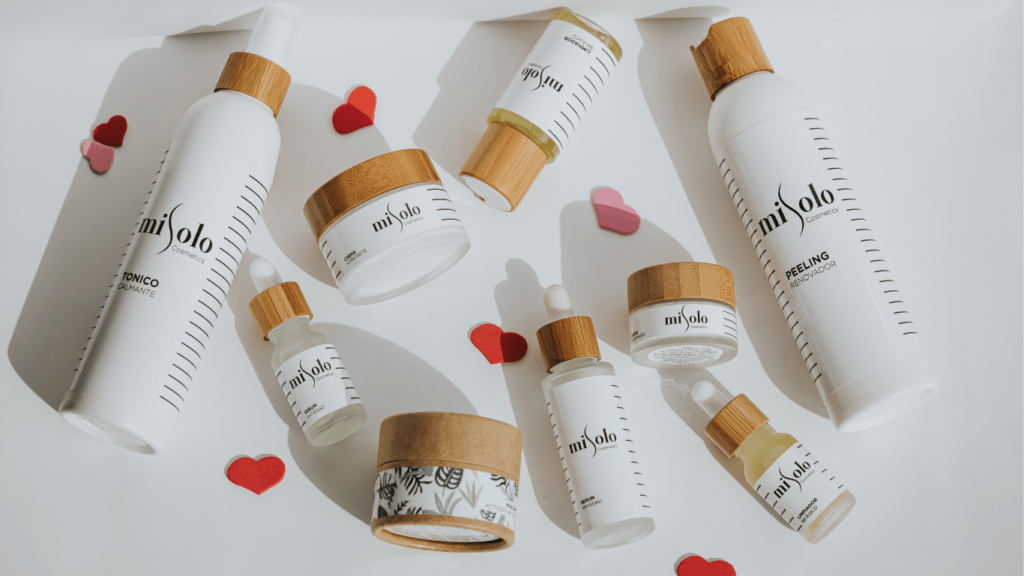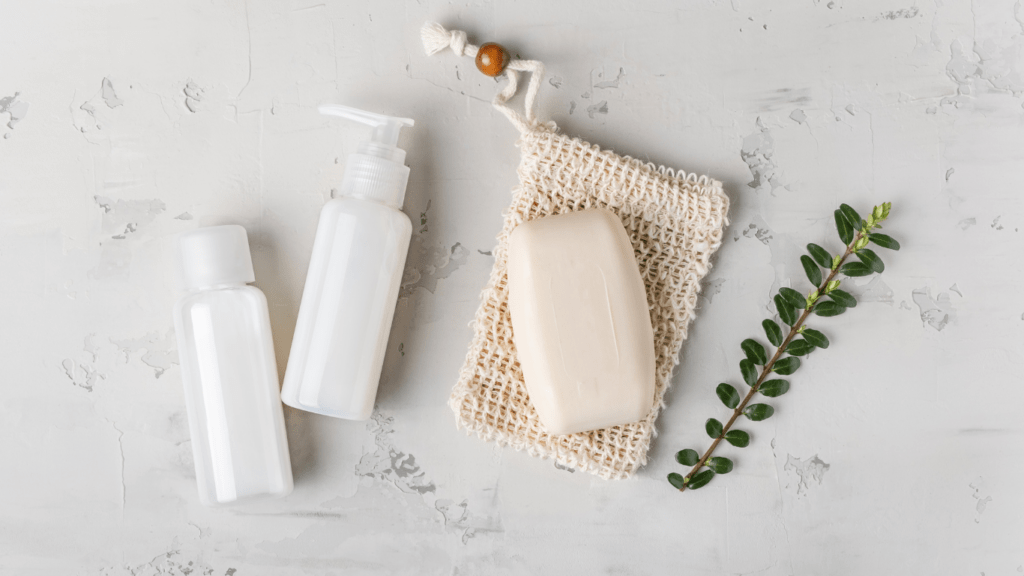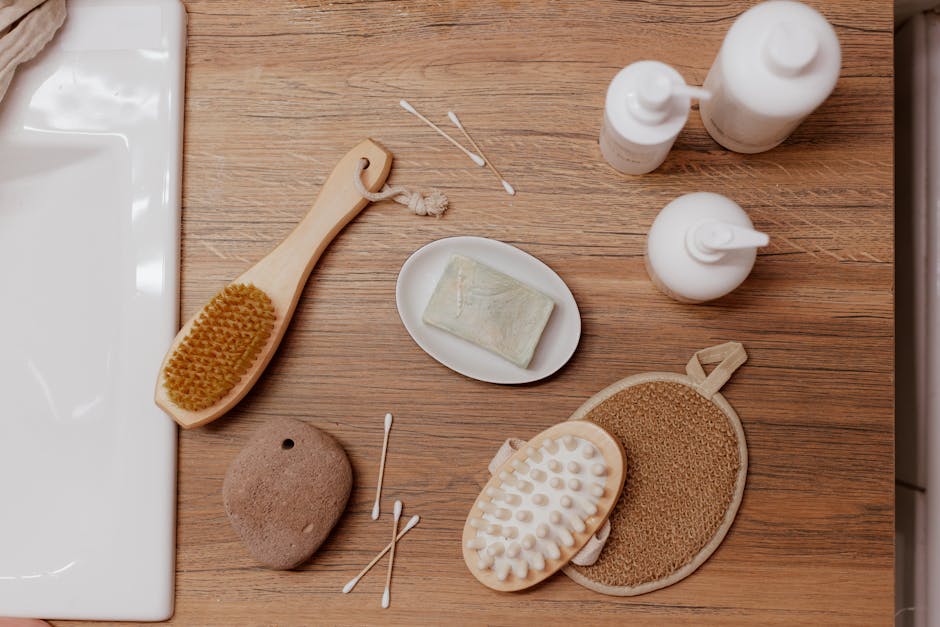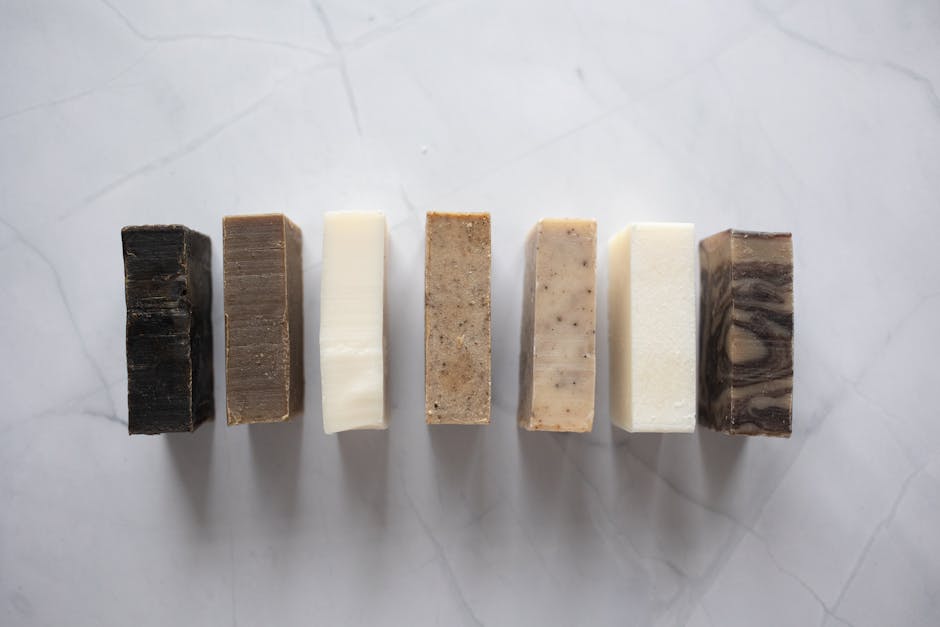Understanding Product Packaging and Recyclability
Recognizing the types of packaging and their recyclability is crucial for reducing beauty waste. Different materials require specific recycling methods.
Types of Beauty Product Packaging

Beauty products often come in diverse packaging types. Plastic containers are widespread, such as shampoo bottles and makeup compacts.
Glass packaging, like for perfumes and creams, offers the advantage of being infinitely recyclable if clean and free of residues. Metal packaging, found in some aerosol sprays and tin-based containers, is recyclable but must be completely empty before disposal.
Paper packaging, often used for boxes or labels, usually has a high recyclability rate but needs to be free from contamination like glue or plastic coatings. Each type of packaging demands distinct recycling criteria.
Common Symbols and Their Meanings
Recycling involves understanding symbols on beauty product packaging. The Mobius loop (three chasing arrows) indicates the material is recyclable.
Resin identification codes (numbers 1-7 inside the Mobius loop) denote types of plastics; for example, “1” stands for PET, commonly recycled, while “7” indicates a miscellaneous category, often harder to recycle.
The Green Dot signifies that the manufacturer supports recycling and recovery programs, though it doesn’t guarantee recyclability of the item.
A Tidyman icon encourages proper disposal, showing a human figure tossing litter into a bin, promoting environmental responsibility. Understanding these symbols aids in correctly sorting and recycling beauty product packaging.
Step-by-Step Guide to Recycling Beauty Products
Recycling beauty products can be straightforward with a few clear steps. Here’s a comprehensive guide to get you started.
Sorting Products by Material
Start by gathering all used beauty products. Sort them by material type. Separate plastic (e.g., shampoo bottles), glass (e.g., serum containers), metal (e.g., aerosol cans), and paper (e.g., packaging boxes).
This step ensures each material gets processed appropriately. Check local recycling guidelines, as they differ by location.
Cleaning and Preparing Containers for Recycling
Rinse and clean all containers. Remove any remaining product residue, making sure they’re dry before recycling. Labels and stickers can stay unless your local facility specifies otherwise.
For pumps and applicators, they often can’t go in curbside bins, so dispose of these separately unless specified by local facilities.
Alternative Ways to Dispose of Non-Recyclable Products
Some beauty products aren’t recyclable due to their materials. It’s important to consider alternative disposal methods to handle them responsibly.
Upcycling Ideas for Beauty Containers
Upcycling beauty containers can reduce waste. For example:
- Storage Solutions: Use empty jars for organizing small items like cotton swabs, jewelry, or spices.
- DIY Projects: Turn bottles into vases, candle holders, or plant pots.
- Travel Kits: Repurpose small containers to hold travel-size beauty products like lotions or shampoos.
- Craft Supplies: Utilize containers in art projects, such as painting or decoupage.
- Shelters: Women’s shelters often accept gently used beauty products to support residents.
- Friends and Family: Share products with friends or family members who might use them.
- Beauty Banks: Organizations like Beauty Banks repurpose and distribute toiletries to those in need.
- Community Groups: Local online groups or social media communities can be a platform to offer items to others.
Challenges in Recycling Beauty Products
Recycling beauty products isn’t straightforward. Diverse materials, unclear labels, and complex packaging often hinder effective recycling.
Issues with Multi-Material Packaging
Multi-material packaging poses significant recycling challenges. Many beauty products combine plastic, metal, and other materials into one package. For example, a foundation bottle might have a plastic cap, metal spring, and glass body.
Recycling facilities often can’t process such mixed materials, resulting in the entire item being discarded. To improve recycling rates, consumers should look for single-material packaging or brands committed to sustainable packaging practices.
Lack of Labeling Clarity
Clear labeling on beauty products is crucial for proper recycling. However, many products lack explicit recycling instructions or symbols. Without clear guidance, consumers often dispose of items incorrectly.
For instance, a moisturizer jar may not indicate if its plastic is recyclable. To address this, brands should adopt standardized labeling practices and educate consumers on correct recycling methods.
Clear symbols and instructions make a significant difference in recycling outcomes.




